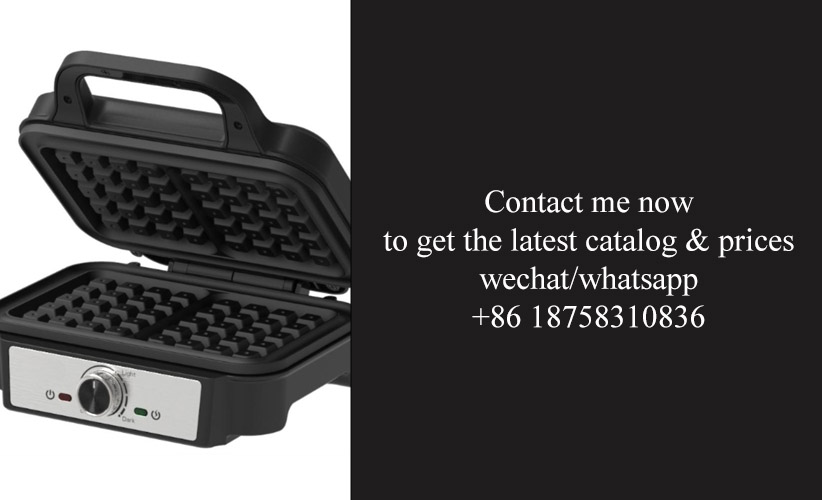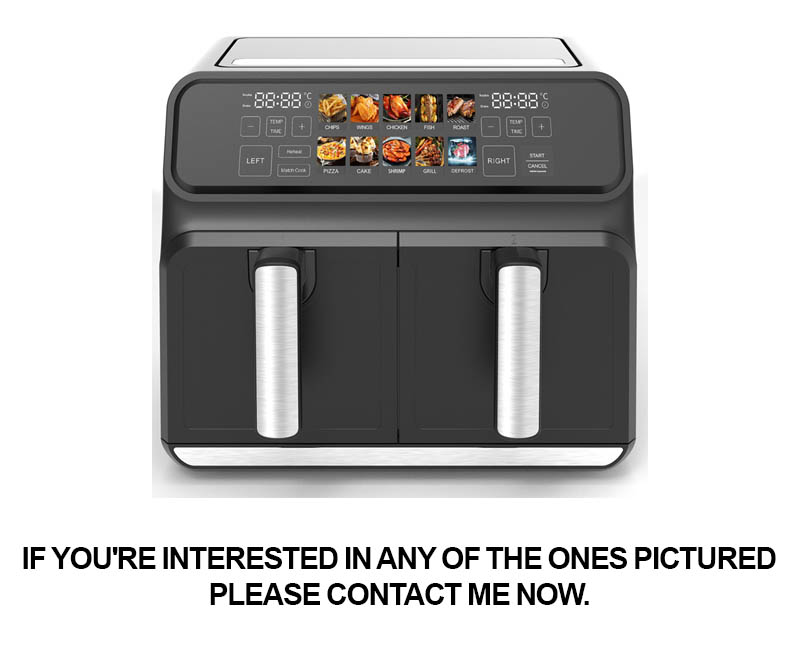Address
304 North Cardinal
St. Dorchester Center, MA 02124
Work Hours
Monday to Friday: 7AM - 7PM
Weekend: 10AM - 5PM
Address
304 North Cardinal
St. Dorchester Center, MA 02124
Work Hours
Monday to Friday: 7AM - 7PM
Weekend: 10AM - 5PM

In a world where technology and consumer demands are constantly evolving, the kitchen appliance industry finds itself at a crossroads. With the rise of import substitution programs, suppliers are presented with a unique opportunity to reshape the landscape of this vital sector. As we delve into the intricacies of this market, it becomes clear that understanding consumer preferences, embracing innovation, and adapting to new industry trends are key factors that will define the future of kitchen appliances.
The kitchen appliance industry has been witnessing a significant shift towards import substitution, a trend that’s reshaping the landscape of domestic production. As global supply chains face disruptions and the demand for local manufacturing grows, this movement is becoming increasingly prominent. Let’s delve into the factors driving this rise and its implications for the industry.
The economic climate has played a pivotal role in the surge of import substitution in kitchen appliances. With rising costs of importing and an increasing awareness of national economic security, many countries are now looking to bolster their domestic production capabilities. This shift is particularly noticeable in Europe and the United States, where the cost of living and the cost of doing business have been steadily climbing.
In Europe, the push for sustainability and the desire to reduce carbon footprints have accelerated the trend. Manufacturers are now focusing on producing appliances that are not only energy-efficient but also made with locally sourced materials. This shift not only reduces the carbon emissions associated with long-distance transportation but also supports local economies.
The United States, on the other hand, is witnessing a resurgence in domestic manufacturing driven by the “Buy American” movement. Consumers are increasingly seeking out products that are made in the USA, not just for quality assurance but also for the sense of pride and support for the local workforce.
As the demand for import substitution grows, manufacturers are responding with innovative solutions. They are investing in research and development to create kitchen appliances that are not only efficient and sustainable but also tailored to the specific needs and preferences of local consumers. From compact appliances for urban apartments to high-end models for luxury homes, the variety and sophistication of domestic products are expanding.
One of the key drivers behind this trend is the changing demographics. As the population ages, there’s a growing need for appliances that are easy to use, safe, and adaptable to different lifestyles. For example, the rise in single-person households has led to a demand for smaller, multifunctional appliances that can meet all cooking needs without taking up too much space.
Suppliers have a crucial role to play in this import substitution program. They need to adapt their strategies to cater to the evolving market demands. This involves a deep understanding of the local market, including consumer preferences, pricing strategies, and distribution channels. Suppliers must also ensure that they can meet the increased quality standards expected from domestic products.
Collaboration between manufacturers and suppliers is essential for the success of import substitution. Suppliers must be able to provide the necessary components and materials in a timely and cost-effective manner. This often requires a close working relationship and a willingness to innovate and customize products to meet specific requirements.
The latest industry trends and data analysis further highlight the potential of import substitution. Market research indicates that there is a significant opportunity for growth in the domestic kitchen appliance market. Consumers are increasingly seeking out locally made products, and the perception of quality is shifting from being solely associated with imported goods.
Case studies of successful import substitution programs in various countries demonstrate the positive impact on local economies. For instance, a well-known kitchen appliance brand in Germany has seen a surge in sales as consumers embrace the quality and sustainability of domestically produced appliances. Similarly, in the United States, a number of small-scale manufacturers have gained a foothold in the market by focusing on niche markets and offering unique features that cater to specific consumer needs.
Despite the optimism, there are challenges ahead. Suppliers may face obstacles in scaling up production to meet the growing demand. Additionally, the cost of manufacturing locally can sometimes be higher than importing, although this gap is narrowing as economies of scale are achieved and the cost of transportation increases.
To navigate these challenges, suppliers must focus on efficiency, innovation, and strategic partnerships. By leveraging technology and investing in automation, they can reduce costs while maintaining high-quality standards. Moreover, forming alliances with local research institutions and universities can help in developing cutting-edge solutions that address the evolving needs of consumers.
In conclusion, the rise of import substitution in the kitchen appliance industry is a multifaceted trend that is being driven by economic, environmental, and demographic factors. Suppliers play a vital role in this shift, and by embracing innovation and collaboration, they can contribute to the growth of the domestic market and the overall well-being of the industry.

The kitchen appliance industry has undergone a fascinating transformation over the years, with market dynamics shifting significantly. As consumer needs evolve and technology advances, understanding these dynamics is crucial for both suppliers and manufacturers. Let’s delve into the key aspects that shape the current landscape.
Consumer demands are ever-changing, influenced by factors such as lifestyle, health consciousness, and technological advancements. Modern consumers are seeking appliances that not only simplify their lives but also enhance the overall cooking experience. Smart kitchen appliances, for instance, are becoming increasingly popular, as they offer convenience, efficiency, and connectivity.
The rise of eco-friendly and energy-efficient appliances reflects a growing awareness of environmental sustainability. Consumers are more likely to invest in products that reduce energy consumption and have a lower carbon footprint. This shift has prompted manufacturers to innovate and develop appliances that align with these green values.
Regional preferences play a significant role in shaping the kitchen appliance market. For example, in Europe, there’s a strong preference for high-quality, durable appliances that often come with a premium price tag. In contrast, the North American market is more focused on innovation and the latest technology. Understanding these regional nuances is essential for suppliers looking to cater to specific customer segments.
The competitive landscape in the kitchen appliance industry is characterized by both established players and emerging brands. Large corporations with extensive global reach continue to dominate the market, but smaller, niche players are gaining traction by focusing on unique selling propositions. This competition drives innovation and pushes the industry to constantly evolve.
Distribution channels have also undergone a transformation. Online sales have surged, thanks to the convenience and accessibility they offer. E-commerce platforms have become a vital part of the supply chain, allowing manufacturers and suppliers to reach a wider audience. However, traditional brick-and-mortar retailers still hold a significant market share, especially in the premium appliance segment.
The integration of technology into kitchen appliances has opened up new opportunities for suppliers. Connectivity, automation, and artificial intelligence are just a few examples of how technology is reshaping the industry. Suppliers that can offer integrated solutions or appliances with smart features are likely to gain a competitive edge.
Regulatory changes can have a profound impact on the kitchen appliance industry. Environmental regulations, safety standards, and import/export policies all play a role in shaping the market. Suppliers must stay abreast of these changes to ensure compliance and avoid any potential disruptions to their operations.
The impact of globalization cannot be overstated. The kitchen appliance industry is highly globalized, with manufacturers and suppliers sourcing components and materials from around the world. This interconnectedness has led to a more complex supply chain, but it also offers opportunities for cost savings and access to a wider range of products.
Consumer behavior is influenced by a variety of external factors, including economic conditions, cultural shifts, and technological disruptions. For example, during economic downturns, consumers may prioritize value over brand, leading to increased demand for more affordable appliances. Similarly, cultural trends, such as the rise of meal prepping and healthy eating, can drive the demand for specific types of appliances.
Finally, the importance of customer service and after-sales support cannot be underestimated. In an industry where products can be expensive and complex, consumers value the peace of mind that comes with reliable customer service and support. Suppliers that excel in this area can build long-term relationships with customers and gain a competitive advantage.
In summary, the market dynamics in the kitchen appliance industry are complex and multifaceted. By understanding consumer trends, regional preferences, technological advancements, and the competitive landscape, suppliers can navigate these dynamics more effectively and position themselves for success.

In the ever-evolving world of kitchen appliances, innovation isn’t just about creating new products; it’s about understanding the needs and desires of consumers. Here are some fresh, innovative ideas that are reshaping the kitchen appliance industry:
The integration of smart technology into everyday kitchen tools is not a new concept, but there’s always room for improvement. Imagine a blender that not only crushes ice and blends smoothies but also connects to your smart fridge to suggest recipes based on what’s available in your pantry. This not only adds convenience but also encourages healthier eating habits.
Sustainability is at the forefront of many consumers’ minds, and kitchen appliances are no exception. A refrigerator that uses less energy, an oven that utilizes heat more efficiently, or even a washing machine that recycles water are all innovative ideas that cater to the eco-conscious consumer. These green appliances not only reduce environmental impact but also save money on utility bills.
The kitchen is often the heart of the home, and appliances that enhance social interaction are becoming increasingly popular. Think of a kitchen island that doubles as a digital hub, where family members can gather around to cook, share recipes, or even watch a movie while waiting for dinner. This kind of interactive appliance can transform the kitchen into a versatile social space.
Safety is a paramount concern in any kitchen, and appliances that prioritize this aspect can be revolutionary. A stove with built-in sensors that detect and prevent burns, or a microwave with a child lock feature, are just a couple of examples. These safety features can give peace of mind to busy parents and help prevent accidents in the kitchen.
Personalization is key in today’s market. Appliances that can be customized to the user’s preferences, whether it’s the color of a countertop oven or the type of cleaning cycle for a dishwasher, cater to the desire for individuality. This could be as simple as an app that allows users to program their appliance to their specific needs, or as complex as an appliance that learns from usage patterns and adjusts its functions accordingly.
The rise of health and wellness has spurred a wave of kitchen appliances designed to promote better health. A juicer that not only extracts the maximum amount of nutrients but also purifies the juice, or a slow cooker that provides nutritional information on each dish, are examples of how appliances can be designed to support a healthier lifestyle.
In the realm of convenience, there are innovative ideas that streamline kitchen tasks. A multifunctional appliance that can chop, slice, and puree, or an oven that can both cook and dehydrate food, are just two examples of how combining functions can save time and space in a kitchen.
For those with limited mobility, kitchen appliances that offer hands-free operation can be life-changing. Think of a countertop mixer that can be controlled with a simple wave of your hand or an oven door that opens and closes with a gentle push. These features can make cooking accessible to everyone.
Lastly, the kitchen of the future is likely to be driven by AI. Appliances that can learn and predict your needs, such as a fridge that knows when you’re low on milk or an oven that suggests meals based on the ingredients you have, are not just innovative but also indicative of the direction the industry is heading.
Each of these ideas, while seemingly simple on the surface, represents a significant leap in how we interact with our kitchen appliances. By focusing on consumer needs, sustainability, safety, personalization, health, convenience, accessibility, and the integration of technology, the kitchen appliance industry is poised for exciting advancements that will redefine the way we cook and live.

In the realm of import substitution programs, suppliers play a pivotal role in reshaping the landscape of kitchen appliances. Their strategies and offerings can significantly impact the success of these initiatives. Here’s a closer look at how suppliers contribute to this dynamic process.
Suppliers must first understand the local market’s unique needs and preferences. This involves delving into consumer behavior, cultural nuances, and economic factors that influence purchasing decisions. By analyzing these elements, suppliers can tailor their products to resonate with the target audience, ensuring that the import substitution program aligns with the expectations of local consumers.
The quality of the products offered by suppliers is paramount in the import substitution program. High-quality appliances not only meet the standards of local consumers but also help build trust in domestic brands. Suppliers must invest in research and development to create innovative, durable, and efficient appliances that can compete with imported goods. This not only fosters the growth of local industries but also provides consumers with reliable alternatives.
Adapting to local regulations and standards is another critical aspect of suppliers’ role. Each country has its own set of rules and certifications that appliances must adhere to. Suppliers must navigate these complexities to ensure their products can be legally sold and used within the target market. This often requires partnerships with local regulatory bodies and compliance with safety and environmental standards.
In the import substitution program, suppliers must also consider the supply chain. A robust and efficient supply chain is essential for the timely delivery of products, reducing costs, and minimizing disruptions. By optimizing logistics and distribution networks, suppliers can ensure that their appliances are readily available to consumers, further enhancing the program’s effectiveness.
Cost competitiveness is a major challenge for suppliers in the import substitution program. They need to produce appliances at a price point that is attractive to consumers while still maintaining profitability. This requires a delicate balance between cost reduction and quality assurance. Suppliers might explore local sourcing of materials, streamline production processes, or invest in energy-efficient technologies to lower costs without compromising on quality.
Collaboration with local manufacturers and designers is crucial for suppliers looking to innovate within the import substitution program. By working closely with these entities, suppliers can leverage local expertise and craftsmanship to develop unique and culturally relevant products. This not only strengthens the local economy but also fosters a sense of pride in domestic brands.
Suppliers must also be adept at marketing and branding. In the import substitution program, they need to communicate the benefits of their products effectively to consumers. This involves creating compelling marketing campaigns that highlight the advantages of choosing locally made appliances over imported ones. Storytelling and emotional appeal can be powerful tools in this regard, as they resonate with consumers on a personal level.
The role of suppliers in the import substitution program extends beyond just the production and distribution of appliances. They must also be prepared to offer after-sales support and service. This includes customer service, warranty coverage, and maintenance services. By ensuring that consumers have a positive experience with their products from purchase to usage, suppliers can build long-term customer loyalty and reinforce the program’s success.
Innovation in design and technology is a constant pursuit for suppliers. By staying abreast of global trends and incorporating the latest advancements into their products, suppliers can keep their offerings fresh and competitive. This not only helps in retaining existing customers but also attracts new ones who are looking for cutting-edge kitchen appliances.
Lastly, suppliers must be adaptable and flexible. The import substitution program is an evolving landscape, and suppliers need to be ready to pivot their strategies in response to market changes, consumer feedback, and regulatory updates. This agility is key to maintaining a strong position within the program and ensuring its long-term viability.
In summary, suppliers in the import substitution program must focus on understanding market dynamics, ensuring product quality, navigating regulations, optimizing supply chains, managing costs, collaborating with local entities, marketing effectively, providing excellent customer service, innovating continuously, and adapting to change. By excelling in these areas, suppliers can significantly contribute to the success of the import substitution program and the growth of the local kitchen appliance industry.

In the ever-evolving kitchen appliance industry, staying abreast of the latest trends is crucial for suppliers to remain competitive. Here’s a glimpse into some of the most significant trends and the data that backs them up.
Smart Integration and ConnectivityThe integration of smart technology into kitchen appliances has become a cornerstone of the industry. According to a report by Grand View Research, the smart kitchen appliances market is expected to grow at a CAGR of 8.3% from 2021 to 2028. Consumers are increasingly seeking appliances that can be connected to their smartphones or home automation systems, allowing for remote control and enhanced convenience.
Energy Efficiency and SustainabilityEnergy efficiency is not just a buzzword but a driving force in the kitchen appliance industry. With rising concerns about climate change and energy costs, manufacturers are focusing on developing appliances that consume less power. The U.S. Energy Information Administration (EIA) notes that the sale of energy-efficient appliances has been on the rise, with a significant portion of consumers prioritizing energy-saving features.
Health and Wellness FeaturesAs consumers become more health-conscious, kitchen appliances are incorporating features that cater to wellness. For instance, ovens with convection settings that promote even cooking, reducing the need for excessive oil, and refrigerators with air purification systems are gaining popularity. Data from the International Trade Association (ITA) indicates a growing market for appliances that support healthy eating habits.
Customization and PersonalizationThe era of one-size-fits-all kitchen appliances is giving way to customization. Suppliers are responding to this trend by offering modular appliances and customizable features. According to a study by the Consumer Technology Association (CTA), 60% of consumers are interested in personalized kitchen appliances that can be tailored to their specific needs and preferences.
Artificial Intelligence and Machine LearningAI and machine learning are making their way into kitchen appliances, offering predictive maintenance, personalized recipes, and even automated cooking. A report by MarketsandMarkets predicts that the smart kitchen appliances market will reach $24.4 billion by 2025. This technology not only enhances user experience but also provides valuable data for manufacturers to improve their products.
E-commerce and Direct-to-Consumer SalesThe rise of e-commerce has changed the way consumers purchase kitchen appliances. Suppliers are leveraging online platforms to reach a wider audience and offer direct-to-consumer sales. According to a survey by Statista, 40% of consumers prefer to shop for kitchen appliances online, driven by convenience and competitive pricing.
Urbanization and Compact Living SpacesAs urbanization continues to grow, so does the demand for compact kitchen appliances. Smaller, space-saving designs are becoming more popular, especially in apartments and urban homes. A report by Euromonitor International states that the compact kitchen appliances market is expected to grow at a CAGR of 4.2% from 2020 to 2025.
Renewable Energy and Green AppliancesWith a growing focus on renewable energy, suppliers are developing appliances that can be powered by solar or wind energy. These green appliances not only reduce the carbon footprint but also offer cost savings over time. A study by the Renewable Energy Policy Network for the 21st Century (REN21) shows a steady increase in the adoption of renewable energy in the appliance industry.
Regulatory Compliance and Safety StandardsCompliance with safety standards remains a top priority for suppliers. As regulations evolve, manufacturers must ensure that their products meet the latest safety requirements. A report by the International Electrotechnical Commission (IEC) highlights the importance of adhering to international safety standards to maintain consumer trust.
In conclusion, the kitchen appliance industry is witnessing a multifaceted evolution, driven by technology, consumer preferences, and environmental concerns. Suppliers who can adapt to these trends and leverage the latest data will be well-positioned to succeed in the dynamic marketplace.

In the realm of import substitution, several case studies have emerged that showcase successful examples of domestic industries taking the lead. These instances provide valuable insights into the strategies and challenges faced by companies in this process. Let’s delve into a few notable examples.
One such success story is the rise of the Indian smartphone market. Once dominated by foreign brands, the Indian government’s import substitution program encouraged local manufacturers to step up their game. Companies like Micromax, Lava, and Intex capitalized on this opportunity, investing in research and development and leveraging local supply chains. By offering affordable and customized smartphones, they began to capture a significant market share, reducing the reliance on imports and fostering a competitive domestic industry.
Another compelling case is the transformation of the Argentine automotive industry. After facing economic sanctions and high import tariffs, Argentina embarked on an import substitution program. Local companies like Renault and Mercedes-Benz Argentina adapted by producing vehicles within the country. This not only created jobs but also led to the development of a robust supply chain. The program’s success can be attributed to strategic partnerships with local suppliers, which ensured a steady flow of components and reduced costs.
In the realm of electronics, China’s import substitution efforts have been particularly noteworthy. Once a major importer of electronics, China has now become a global leader in manufacturing. Companies like Huawei and Xiaomi have successfully transitioned from assembling foreign products to designing and producing their own. This shift was driven by government incentives and a focus on innovation. By investing in research and development, these companies have developed cutting-edge technologies, making China a self-sufficient market for electronics.
A similar story unfolds in the Brazilian market, where the import substitution program has spurred the growth of local pharmaceutical companies. Once heavily dependent on imported drugs, Brazil now produces a significant portion of its own medication. Companies like Laboratório Farmacêutico Brasileiro (LFB) have thrived by focusing on generics and biotechnology. The success of these companies can be attributed to strategic alliances with research institutions and the implementation of quality control measures that meet international standards.
The success of import substitution programs is often linked to the development of local talent and infrastructure. For instance, in the Mexican automotive industry, the government’s program has led to the establishment of specialized training centers and educational programs. This has resulted in a skilled workforce that is capable of supporting the domestic manufacturing sector.
In the food processing industry, the import substitution program has encouraged the growth of local producers. Take the example of the Indian dairy sector. Once dominated by imported dairy products, India now boasts a thriving domestic market with companies like Amul leading the way. The success of Amul can be attributed to its cooperative model, which ensures that local farmers receive fair prices for their milk, thereby encouraging production and reducing imports.
While these case studies highlight the potential of import substitution programs, they also reveal the challenges that come with such transitions. One of the most significant challenges is the initial investment required to develop local capabilities and infrastructure. Companies often need to invest heavily in research and development, as well as in building relationships with local suppliers and partners.
Another challenge is the need for consistent government support and policy stability. Import substitution programs can be disrupted by sudden changes in trade policies or economic conditions. Therefore, it is crucial for governments to provide long-term incentives and ensure a level playing field for domestic producers.
In conclusion, the case studies of successful import substitution programs demonstrate that with the right combination of strategic planning, investment, and government support, domestic industries can thrive and reduce their reliance on imports. By fostering innovation, developing local talent, and creating robust supply chains, these programs can lead to a more resilient and self-sufficient economy.

In the ever-evolving kitchen appliance market, challenges and opportunities often go hand in hand. From technological advancements to shifting consumer preferences, here’s a closer look at some of the key hurdles and opportunities that suppliers and manufacturers face.
The rapid pace of technological innovation continues to reshape the kitchen appliance industry. Smart appliances, for instance, are becoming increasingly popular as they offer enhanced functionality and connectivity. However, this technological shift also brings about challenges, such as the need for suppliers to invest in R&D to keep up with the latest trends.
Consumer demand for energy efficiency and sustainability is on the rise, pushing suppliers to adapt their product lines. While this presents an opportunity to develop eco-friendly appliances, it also requires suppliers to navigate the complexities of sourcing sustainable materials and ensuring compliance with stringent environmental regulations.
Market saturation is a challenge that affects the kitchen appliance market. With numerous brands vying for consumers’ attention, suppliers must find ways to differentiate their products. This can be achieved through innovative designs, superior functionality, or unique value propositions that resonate with specific market segments.
The globalization of the kitchen appliance market has both positive and negative implications. On one hand, it allows suppliers to tap into new markets and expand their customer base. On the other hand, it means facing stiff competition from international players. Suppliers must develop strategies to compete effectively, whether it’s through cost leadership, product differentiation, or strategic partnerships.
E-commerce has revolutionized the way consumers purchase kitchen appliances. While it offers convenience and access to a wider range of products, it also brings challenges such as increased returns and warranty management. Suppliers need to adapt their business models to accommodate the unique demands of online sales, including efficient logistics and customer service.
The integration of kitchen appliances with home automation systems is another trend that presents both challenges and opportunities. Suppliers must ensure that their products are compatible with various smart home platforms, which can be a complex task given the diversity of technologies and standards in the market. However, successful integration can open up new revenue streams and create a more seamless and integrated kitchen experience for consumers.
Regulatory changes can be both a challenge and an opportunity for kitchen appliance suppliers. New safety standards, for example, may require suppliers to invest in new testing facilities or redesign their products. Yet, these changes can also drive innovation and open up new market segments, such as the demand for appliances designed for specific demographic groups or lifestyle preferences.
Finally, the challenge of maintaining product quality while managing cost pressures is a constant concern for suppliers. Balancing quality and affordability is crucial, as consumers are increasingly looking for value for money. Suppliers must find ways to optimize their production processes, source cost-effective materials, and maintain stringent quality control without compromising on the end product.
In conclusion, the kitchen appliance market is rife with challenges and opportunities. Suppliers must stay agile, innovative, and customer-focused to navigate these complexities and capitalize on the market’s potential for growth. By understanding the nuances of the market and embracing the right strategies, suppliers can not only meet the demands of today’s consumers but also shape the future of the industry.

Navigating the complexities of the kitchen appliance market, suppliers must adapt and innovate to capitalize on the growing trend of import substitution. This shift, driven by a desire for local production and reduced dependency on foreign goods, presents a unique set of strategies that can either make or break a business. Here are some key approaches suppliers can consider:
In the face of import substitution, suppliers must first assess the demand for locally produced kitchen appliances. This involves analyzing consumer preferences, regional tastes, and the evolving needs of the market. By understanding what consumers are looking for, suppliers can tailor their products to meet these specific requirements.
To effectively capitalize on import substitution, suppliers should focus on quality over quantity. High-quality appliances not only meet consumer expectations but also contribute to a positive brand image. Investing in research and development to improve durability, efficiency, and design can set local brands apart from imported alternatives.
The rise of import substitution also means suppliers need to establish a strong distribution network. Ensuring that products are readily available across various retail channels and online platforms is crucial. A robust distribution system can help suppliers reach a wider audience and maintain inventory levels that meet market demand.
Collaborating with local manufacturers is another strategic move. By forging partnerships, suppliers can leverage the expertise and resources of local producers to create competitive appliances. This not only supports the local economy but also allows for quicker product development and customization.
To compete with imported appliances, suppliers must consider cost-effectiveness. This doesn’t mean compromising on quality but rather finding innovative ways to reduce production costs without sacrificing performance. Techniques such as lean manufacturing, bulk purchasing, and efficient supply chain management can all contribute to cost savings.
Marketing plays a pivotal role in the success of import substitution strategies. Suppliers need to communicate the benefits of locally produced appliances to consumers. Highlighting factors like lower environmental impact, shorter supply chains, and the potential for job creation in the local community can resonate with eco-conscious and patriotic consumers.
In the realm of import substitution, innovation is not just about new products but also about new business models. Suppliers can explore subscription-based services, where customers pay a monthly fee for appliance maintenance and upgrades. This model can provide a steady revenue stream and encourage brand loyalty.
Consumer education is key to the success of import substitution. Suppliers should invest in educating consumers about the benefits of local appliances. This could involve workshops, online tutorials, and in-store demonstrations that showcase the features and advantages of their products.
The integration of technology into kitchen appliances is a trend that suppliers should embrace. Smart appliances, for instance, can offer enhanced functionality, energy efficiency, and connectivity. By incorporating the latest tech advancements, suppliers can appeal to tech-savvy consumers who are looking for the latest innovations.
Lastly, suppliers must stay abreast of regulatory changes and comply with local standards. Adhering to local regulations and certifications can help establish credibility and trust with consumers, who are more likely to purchase appliances that meet their country’s specific safety and quality requirements.
In summary, suppliers looking to capitalize on import substitution must focus on understanding consumer needs, maintaining high quality, establishing a strong distribution network, collaborating with local manufacturers, managing costs, marketing effectively, innovating business models, educating consumers, integrating technology, and complying with regulations. By adopting these strategies, suppliers can navigate the complexities of the kitchen appliance market and thrive in the era of import substitution.

Consumer preferences have always been a driving force behind the evolution of the kitchen appliance market. As these preferences shift, so too do the strategies of suppliers. Here’s an exploration of how consumer choices are reshaping the landscape for suppliers in the kitchen appliance industry.
In the quest for convenience, consumers are increasingly gravitating towards smart appliances that can be controlled remotely. This shift has spurred suppliers to invest in technology that allows kitchen gadgets to connect with smartphones and other devices, offering a seamless user experience. The integration of AI and IoT (Internet of Things) in kitchen appliances has become a norm, not an exception.
Energy efficiency is another area where consumer preferences are making waves. With the rise of eco-conscious consumers, suppliers are now focusing on creating appliances that consume less energy without compromising performance. This has led to the development of appliances with energy-saving modes, LED lighting, and more sustainable materials. Suppliers who fail to adapt to these preferences risk losing out to competitors who are quick to embrace green technology.
Sustainability and ethical sourcing are becoming more than just buzzwords; they’re integral to consumer buying decisions. Suppliers are now under pressure to demonstrate their commitment to the environment by using recycled materials, minimizing packaging, and supporting fair trade practices. This shift in consumer values has suppliers reevaluating their supply chains and production methods to ensure they align with these new standards.
The demand for versatility in kitchen appliances has also grown significantly. Consumers are looking for multifunctional devices that can handle a variety of tasks, reducing the need for multiple gadgets and saving space. Suppliers are responding with appliances like all-in-one coffee makers, dual-purpose toasters, and countertop ovens that can roast, bake, and broil. The challenge for suppliers lies in creating these multifunctional devices without overcomplicating the user interface or compromising quality.
Health and wellness are at the forefront of consumer preferences, especially when it comes to kitchen appliances. There’s a growing interest in appliances that can help users maintain a healthy lifestyle, such as air fryers that use less oil, sous-vide cookers for precise temperature control, and juicers for fresh, homemade juice. Suppliers are investing in research and development to innovate in these areas, understanding that health-conscious consumers are willing to pay a premium for quality.
Customization is another trend that’s gaining traction. Consumers no longer want one-size-fits-all solutions; they’re looking for appliances that can be tailored to their specific needs. Suppliers are responding by offering modular kitchen appliances that can be mixed and matched to suit individual tastes and kitchen layouts. This could range from custom-built ovens to refrigerators with adjustable shelves.
The rise of social media and online reviews has also had a significant impact on supplier strategies. Consumers are more likely to make purchasing decisions based on the experiences and recommendations of others. Suppliers must now focus on building a strong online presence, engaging with customers through social media, and ensuring that their products receive positive reviews. The days of relying solely on in-store demonstrations are fading, and suppliers must adapt to this new reality.
As the kitchen appliance market evolves, suppliers must also contend with the global pandemic’s aftermath. The shift to remote work and increased time spent at home has led to a surge in kitchen renovations and upgrades. Suppliers who can offer solutions that cater to this new lifestyle will have a competitive edge. This means focusing on products that are easy to clean, durable, and designed to enhance productivity in the kitchen.
The importance of service and support cannot be overstated. Consumers expect a high level of customer service, including easy-to-access troubleshooting guides, warranty coverage, and prompt response to inquiries. Suppliers that invest in customer satisfaction are likely to build long-term loyalty and repeat business.
In conclusion, the kitchen appliance market is dynamic, and consumer preferences are shaping it in profound ways. Suppliers must be agile and innovative, continuously adapting their product offerings and strategies to meet the evolving demands of consumers. Whether it’s through embracing technology, focusing on sustainability, or offering customizable solutions, suppliers that can align with these shifting preferences will thrive in the competitive landscape of the kitchen appliance industry.

In the ever-evolving landscape of kitchen appliances, embracing the future requires a keen understanding of consumer preferences and the dynamic shifts in technology and design. Suppliers must adapt their strategies to cater to these changing demands, ensuring they remain competitive and relevant in a market that’s becoming increasingly global yet hyper-local. The impact of consumer choices on supplier strategies is profound, and it’s here where the future of kitchen appliances truly unfolds.
Consumer preferences are shaped by a myriad of factors, from sustainability concerns to the integration of smart technology. Suppliers who can align with these evolving trends stand to gain significant advantages. Here’s a deeper look into how consumer preferences are influencing supplier strategies:
Sustainability and Eco-Friendly Designs: With the rise of eco-conscious consumers, there’s a growing demand for appliances that are energy-efficient and environmentally friendly. Suppliers are responding by investing in research and development of appliances that use renewable energy sources, have longer lifespans, and are easier to recycle at the end of their life cycle. This shift not only appeals to environmentally aware consumers but also aligns with regulatory standards and corporate social responsibility goals.
Smart Technology Integration: The kitchen is no longer just a place for cooking but a hub for smart living. Consumers are gravitating towards appliances that can be controlled remotely, offer connectivity with other smart home devices, and provide personalized settings. Suppliers are focusing on creating intuitive interfaces and seamless integration with home automation systems to cater to this tech-savvy market segment.
Customization and Personalization: Mass customization is becoming a norm, with consumers seeking appliances that can be tailored to their specific needs and preferences. Suppliers are exploring modular designs that allow customers to upgrade or replace components as desired, offering a level of flexibility that was previously unavailable. This approach not only increases customer satisfaction but also opens up new revenue streams through after-sales services and parts sales.
Health and Safety Features: As health consciousness grows, so does the demand for kitchen appliances that prioritize safety and health. Suppliers are incorporating features like anti-bacterial surfaces, air filtration systems, and cooking modes that reduce harmful emissions. These innovations not only protect consumers but also position brands as leaders in health and wellness.
Design and Aesthetics: The kitchen has become a space for self-expression, and appliances are no longer just functional items but statement pieces. Suppliers are investing in sleeker designs, innovative materials, and color options that cater to a wide range of aesthetic preferences. The kitchen appliance market is now a playground for creativity, with suppliers pushing the boundaries of what’s possible in terms of form and function.
Accessibility and Inclusivity: The rise of inclusive design has led to a greater focus on accessibility in kitchen appliances. Suppliers are creating products that are easier to use for people with disabilities, offering larger buttons, voice-activated controls, and other features that make appliances more inclusive. This shift not only expands the market but also reflects a brand’s commitment to social responsibility.
Cost-Effectiveness and Value for Money: Despite the increasing complexity and sophistication of kitchen appliances, there’s still a strong preference for cost-effective solutions. Suppliers are balancing innovation with affordability, offering high-quality appliances at competitive prices. This approach ensures that a broad consumer base can access advanced technology without breaking the bank.
Brand Loyalty and Trust: Consumer preferences are also influenced by brand reputation and trust. Suppliers are investing in building strong brand identities that resonate with their target audience, emphasizing quality, reliability, and customer service. A strong brand can be a powerful differentiator in a crowded market.
In conclusion, the future of kitchen appliances is being shaped by a complex interplay of consumer preferences, technological advancements, and societal shifts. Suppliers who can adapt to these changes, offering products that not only meet but exceed consumer expectations, will be the ones to lead the industry into the future. The path is fraught with challenges, but the opportunities for innovation and growth are immense. As we look ahead, it’s clear that the future of kitchen appliances is not just about the latest technology; it’s about creating solutions that enhance lives, foster sustainability, and resonate with the values of modern consumers.